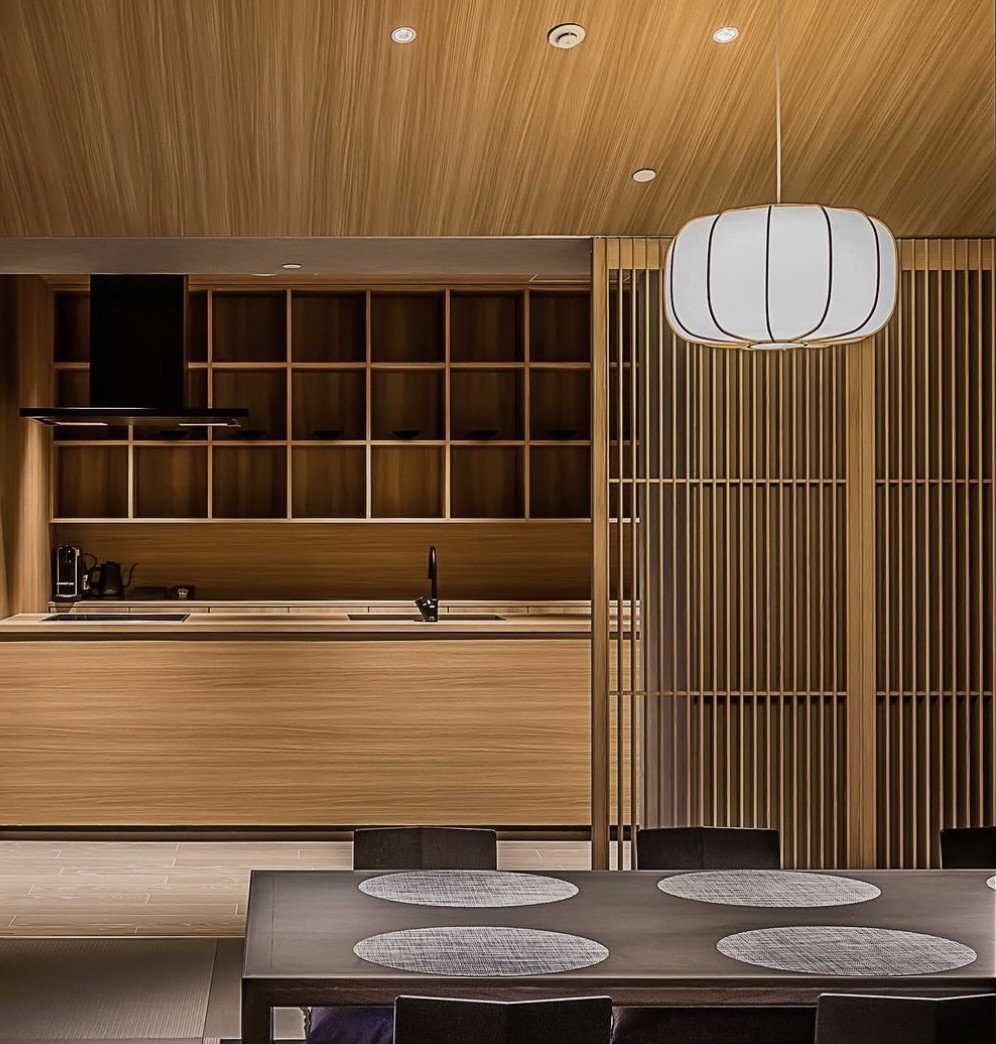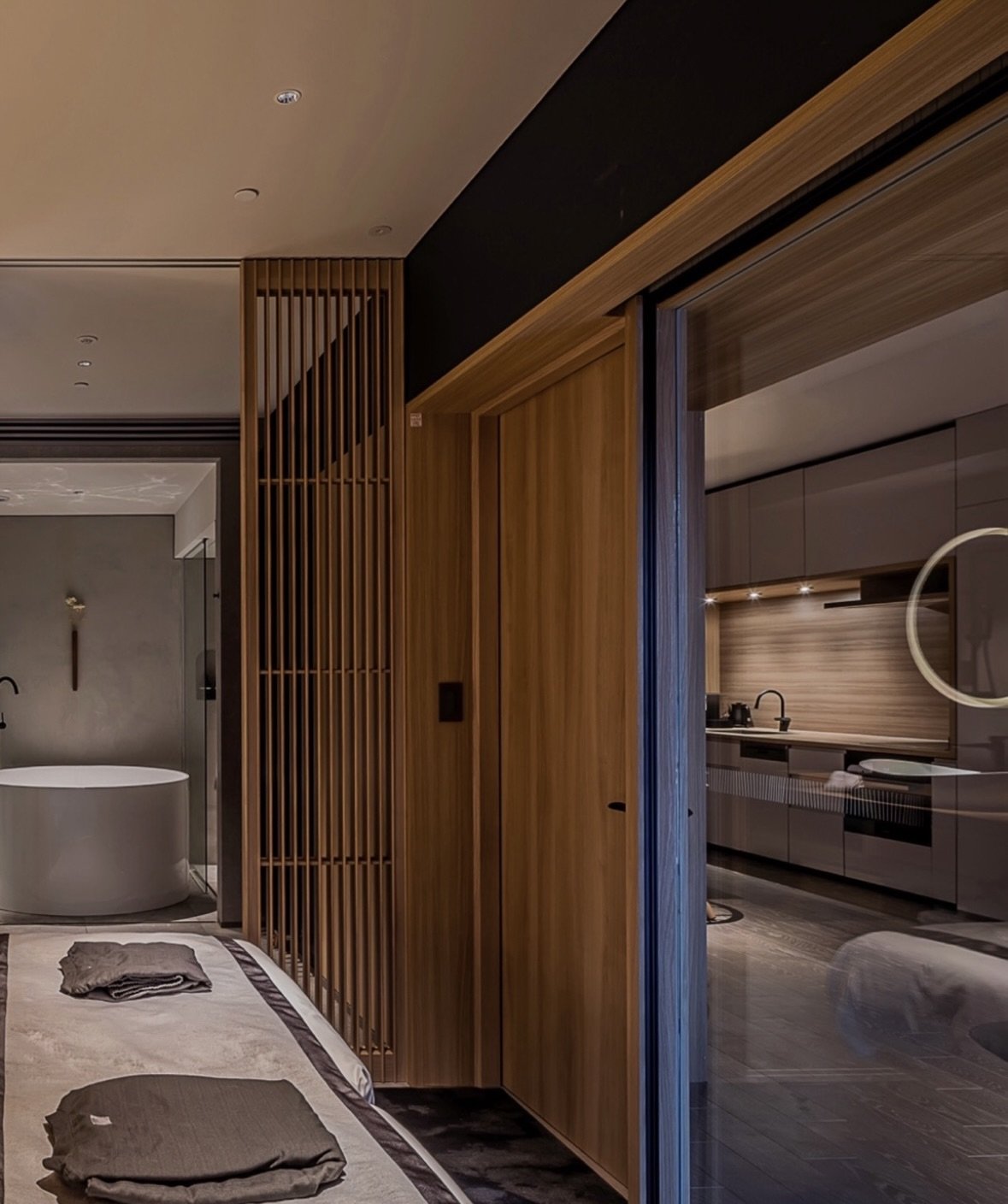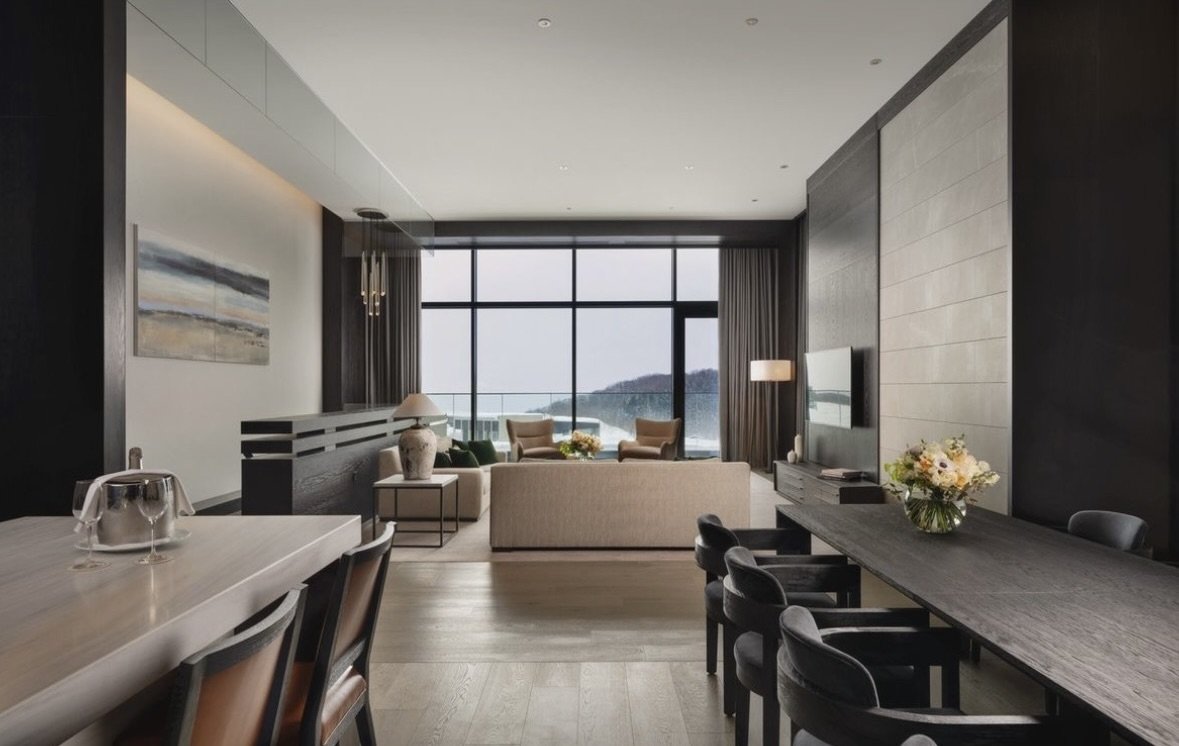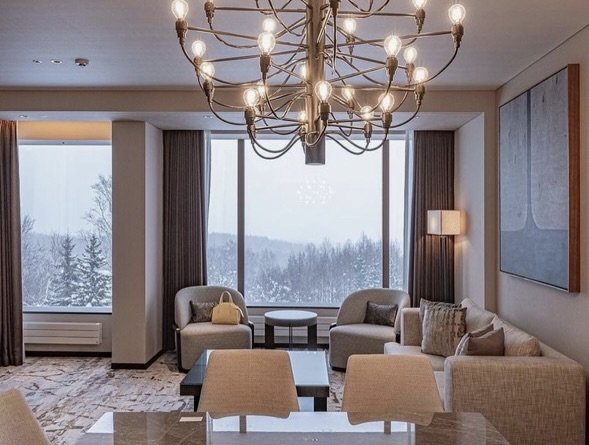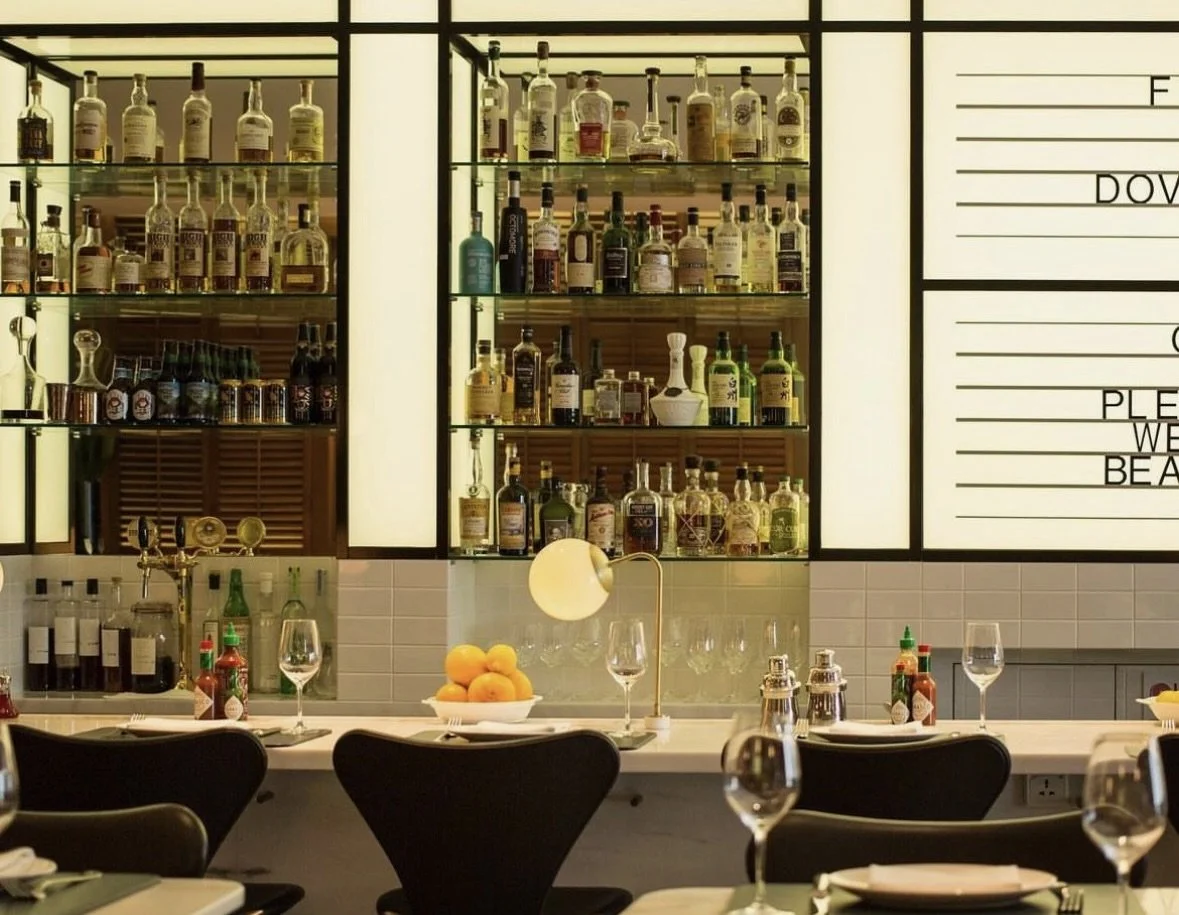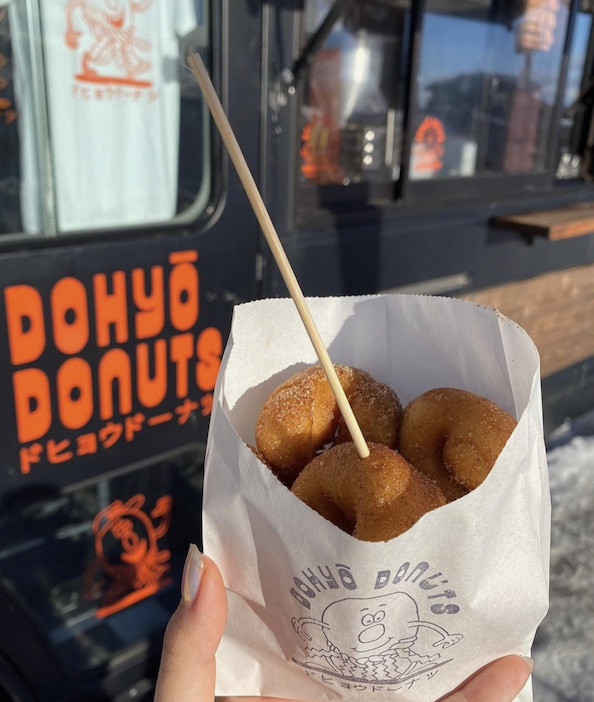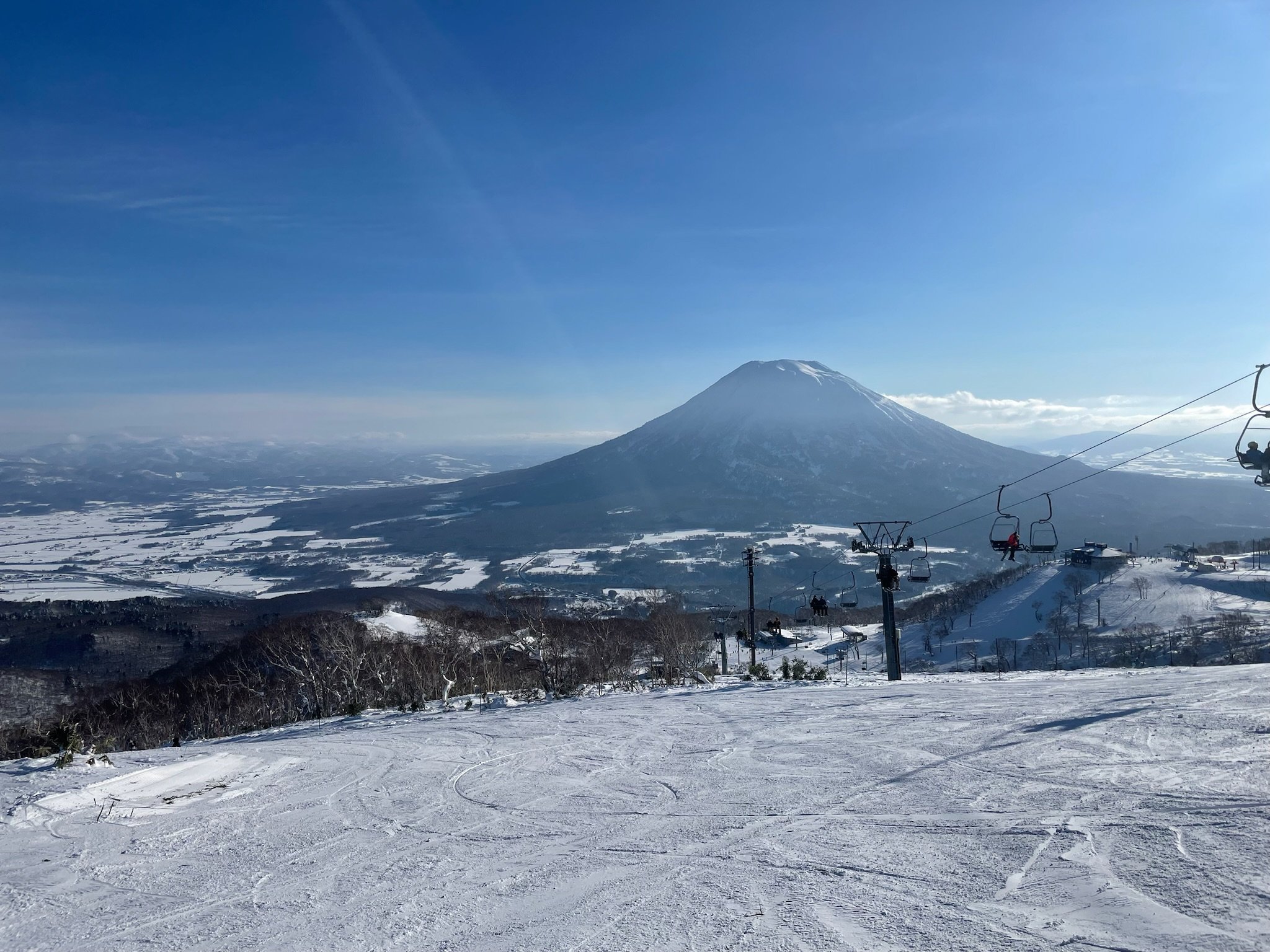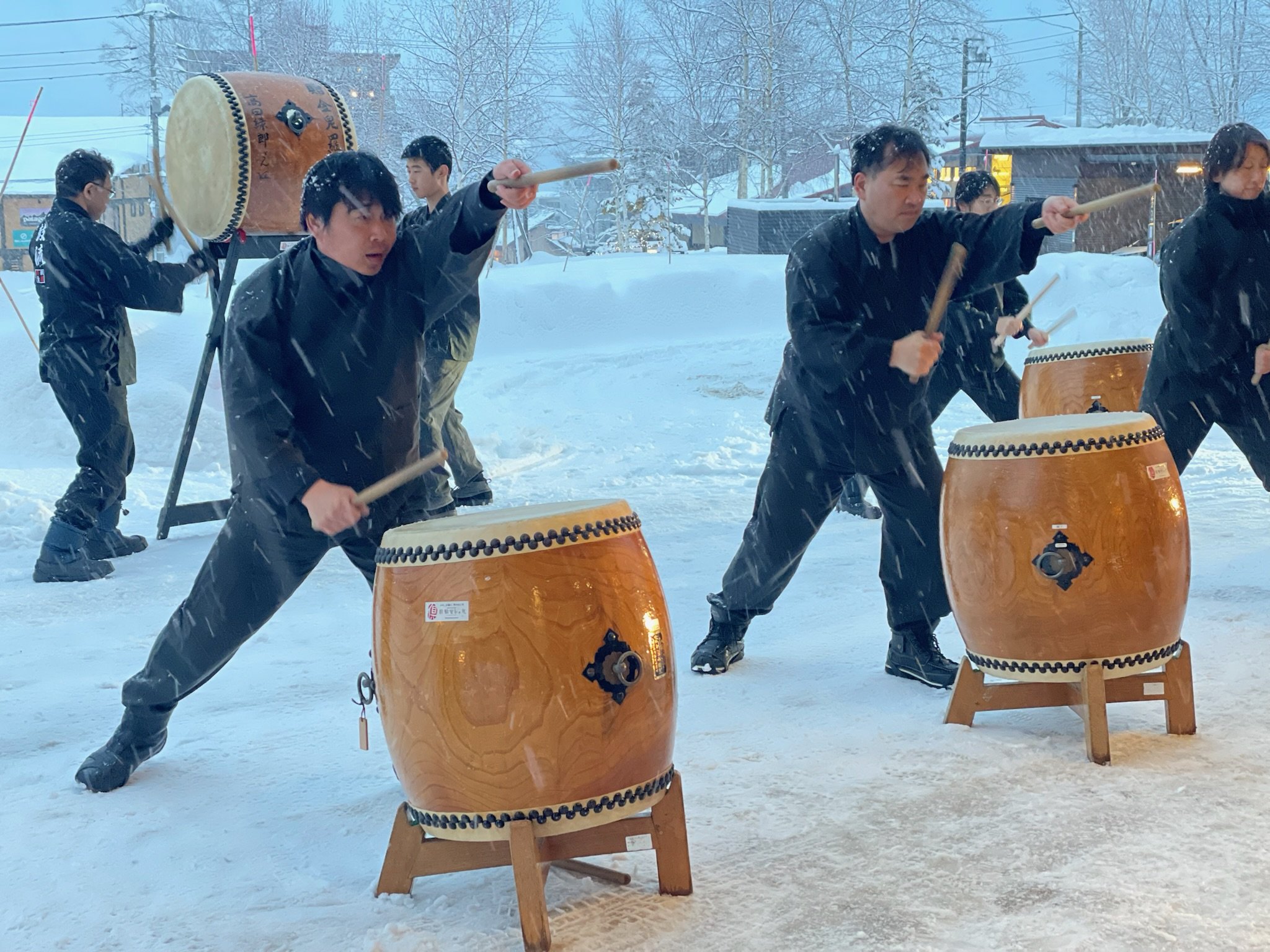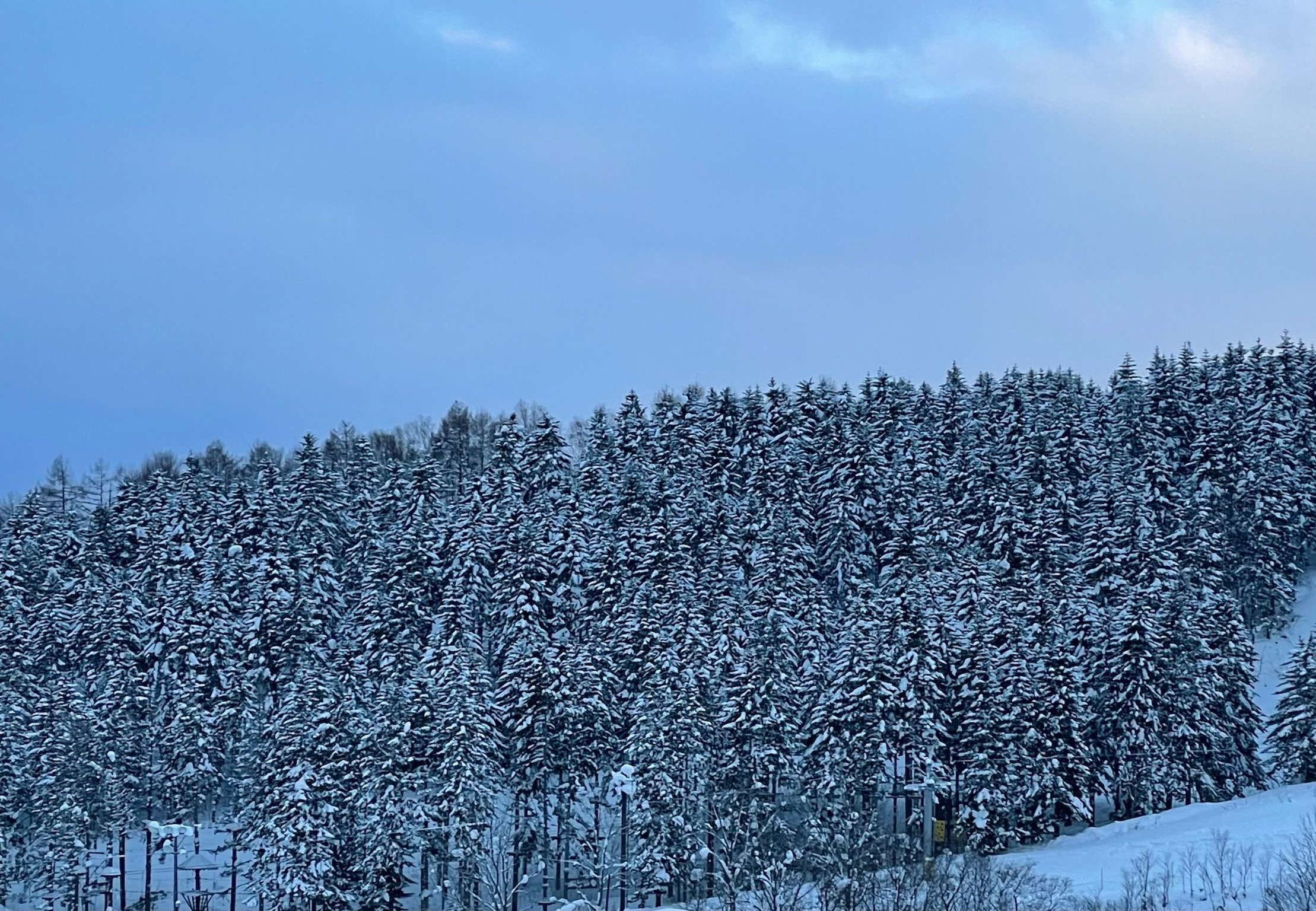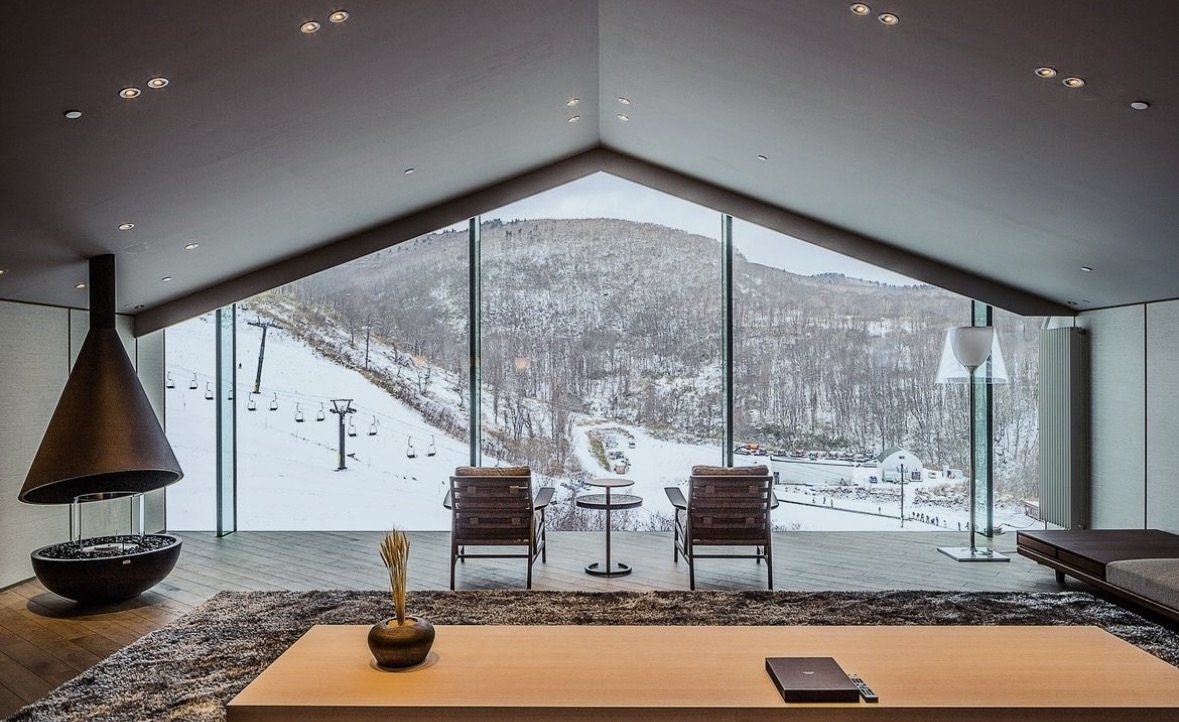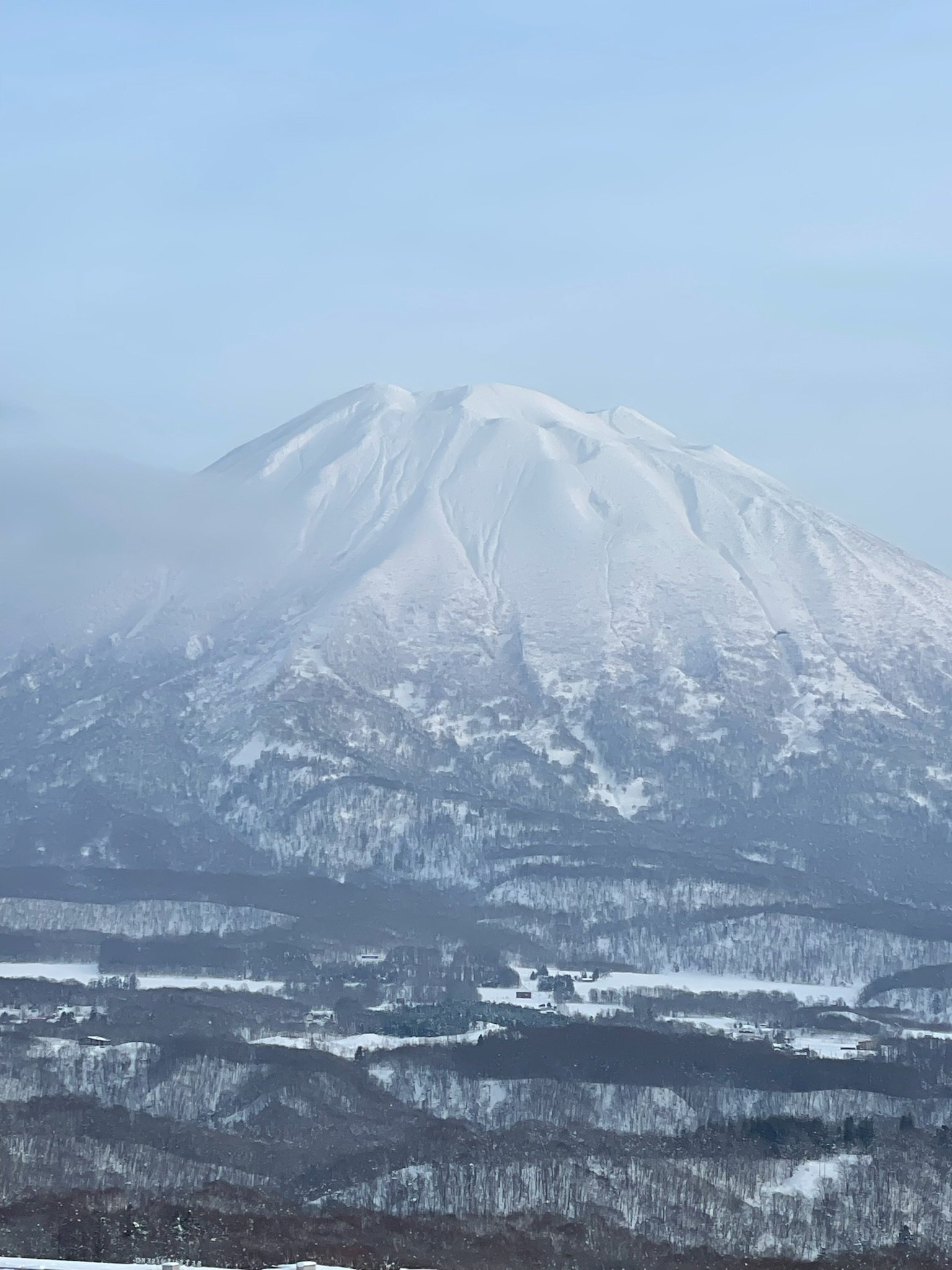Just Back From: Muwa Niseko, Japan
For this edition of Just Back From, I spoke with an individual who recently returned from a ten-day ski trip to Niseko, Japan with his family of four. While most visitors plan a vacation to Japan months ahead of time, this trip was organized forty-eight hours in advance. Impressed? So was I… While he hadn’t been to Japan before, this individual is a diehard skier. If you want advice from someone who knows what they’re talking about when it comes to terrain and conditions, look no further!
You typically ski in Sun Valley and other mountains out west. How did this trip to Japan come to be?
Every December, I move to Sun Valley for two or three months to ski the winter there and in other parts of the West. I arrived on the 18th of December and by noon on the 22nd, I was thinking to myself, I can’t do this anymore. At Sun Valley, only 10% of the mountain was open. Telluride was 2% open. Many mountains were less than 20%. It was too many people and not enough snow.
My family was coming to meet me in two days, and one of my sons suggested that we try to go to Japan instead. We had already talked to a travel agent – she had laughed at the thought of it, saying we could never pull it off. My son proceeded to google a couple of hotels and came across the Muwa Niseko, which had opened less than two weeks earlier. He found a two-bedroom suite available for ten days. We decided to book it.
What flights did you take?
We flew Salt Lake to San Francisco, San Francisco to Tokyo (an eleven-hour flight), and Tokyo to Sapporo (an hour-and-a-half flight on ANA). We landed in Sapporo on Christmas at 9 PM.
How did you reach the hotel?
We hired a private car to drive us from Sapporo to Niseko, which the hotel finalized for us. It was a two-hour drive, and I would recommend hiring a car service if it is your first time. I considered driving myself, but the roads did not have great signage. Taking a train or bus was also available, but having a driver was by far the easiest.
@muwaniseko
What was your impression of the hotel?
The Muwa Niseko was by far the nicest hotel in Niseko. It was brand new; it had been less than two weeks since opening. Designed by Nikken Sekkei, a well-known architect, the building was eight stories and very modern. The exterior looked like stacks of small, individual houses, reminiscent of a mountain village. Inside, it had a very Japanese feel despite being developed by a group based in South Korea. The finishes were very high quality: woodgrain paneling, polished metal, and a lot of dark stone. It was very sophisticated.
What were the rooms like?
The rooms were great. We were in a two-bedroom suite. It was nicely appointed, with a high-end kitchen, dining room table, and three bathrooms – two of which were ensuite.
There were different views depending on what room you were in. We had a Mountain View, which was great. There were better views on the side away from the ski resort; they had a view of Mount Yotei, a beautiful dormant volcano.
Did the hotel have an onsen? What did you make of it?
There was a great in-house spa that had onsens. The public onsen was separated by male and female, and they were very well-appointed. You could also book a private one for you and your spouse / you and your family. The private onsens were on the seventh floor, looking out at Mount Yotei. It was a cool experience: we did a soak in the onsen and then a private Japanese tea ceremony afterward.
Did you visit any other hotels while there?
The Park Hyatt Hanazono was relatively new and very nice. It had a great location, as it was further off to the side – so it was much quieter. The Hyatt was probably fifteen minutes from central Niseko. There was a free bus system that you could take from one part of Niseko to another.
@parkhyattniseko
While we didn’t go inside, the Ritz-Carlton’s Higashiyama Reserve looked nice as well. The Hilton was well-positioned next to the Niseko gondola, but, from what I’ve heard, it was a little dated in terms of design. The hotel next door to us, the Sky Niseko, looked a little dated as well.
@higashiyamareserve
On the main street that runs through downtown, there were several apartments that were available for rent
Mindy’s Tip – There is a new Aman slated to open in Niseko in 2027.
Back at the Muwa, were there restaurants on the property?
They had two great restaurants. One was Sukiyaki Hiyama; the original in Tokyo has a Michelin star. It was very intimate and had seating for about thirty people.
The regular restaurant, which is the everyday restaurant, was called Hito. We went there for breakfasts, lunches, and dinners.
Where did you eat outside of the resort?
On our first night, we went to Afuri at the Setsu Hotel, which was famous for its ramen.
We also went to Fuji Sushi Niseko, which served traditional Japanese sushi. It was a ten-minute walk from the hotel and didn’t take reservations, so we were sure to get there early to get a table. The food was great, and we ate there twice. It was one of my sons’ favorite places to go.
We went to Luke’s Alpine Club for dinner one night, which was also at the Setsu Niseko Hotel, and tried the wagyu steak there.
@lukesoysterbar
There were several local hot pot places around the hotel. I won’t name the one we went to, as we wished we had chosen one that was a bit nicer.
@dohyodonuts
There were a couple of good pizza places for lunch, such as Lava Pizza and Niseko Pizza. Outside of the ski shop Rhythm, there was a van called Dohyo Donuts that served delicious mini donuts. It was a great place for a snack.
Were there restaurants on the mountain?
There were lunch restaurants on the mountain, but we found them to generally be very crowded. At the base of Grand Hirafu, which was the main area we skied out of, there was a restaurant where you could get a proper lunch, like snow crab and sushi. Other places were a bit more cafeteria-style.
Did the hotel have a locker room for ski equipment? How far were you from the slopes?
On the first floor, they had a full-kitted-out ski locker area. They had a limited ski shop, with goggles, jackets, and other accessories. You could rent equipment there, and they were very attentive.
The hotel was basically ski-in ski-out. You walked out of the locker room and were right at the edge of the slopes. From there, you skied down to the gondola.
What were the conditions like?
The skiing experience was great. The snow was very good, but, at the time we were there, it was a bit below average. I kept an eye on the snowfall in the weeks after we left: between January 4th and the end of the month, they got a good six meters in that time.
The temperature was between 15°F and 20°F. The snow was very light. It was Japow.
Side note – ‘Japow’ is a slang portmanteau referring to Japanese powder. It’s very powdery and light – such great quality that it’s deserving of its own moniker!
What about the terrain?
The mountain itself was really good. I would call the terrain intermediate. You don’t go to Japan to ski super steep terrain; you go for the snow and the cultural experience.
Most visitors from this region don’t ski in the trees or off-piste, so the snow in those areas was great. There were a series of gates that we went through to reach those runs. It was technically out of bounds, but the risk here was minimal compared to skiing out of bounds at Aspen or Snowbird, where you have an avalanche risk, big trees, and other hazards. Here, out of bounds was more intermediate-oriented sloping terrain. We spent 80% of our time skiing through the trees because the snow was great. It had good depth and felt safe. You go to Japan to ski Japan powder, and that was what we did.
How was the infrastructure on the mountain? How did it compare to resorts out west?
I wouldn’t use the word dated, but it was not necessarily the same standard you would expect at Vail or Sun Valley.
Could you easily find your way around the mountain?
Yes. Everything was dual-marked – actually probably triple-marked – in Japanese, Chinese, and English. The lifts all made sense, as did how the mountain was laid out. ‘Niseko United’ was technically comprised of four real ski areas. If you worked your way from right to left, there was Hanazono, which was where the Park Hyatt Hotel was. Then the Grand Hirafu, where the Muwa and Sky Niseko Hotel were; this was the main area of Niseko. To the left of Grand Hirafu was Niseko Village, where the Ritz-Carlton, Hilton Hotel, and Seiko Gondola were. To the left of Niseko Village was Annupuri.
We skied mainly in Grand Hirafu, but we did try Hanazono a bit. We skied an area called Strawberry Fields.
We went over to the Niseko Village ski area one day and skied down Gate 11, which is what they’re famous for. That was probably the steepest terrain in all of Niseko.
How much were lift tickets? How did you go about purchasing them?
It was significantly cheaper to ski in Japan than in the United States. An average lift ticket to ski at all four resorts was $70 per day. That was at peak season, too. If we wanted to buy for only two of the areas, say Grand Hirafu and Hanazono, the tickets were discounted. Purchasing was easy. We walked up to the ticket booth and pointed to where we wanted to go. My son had an Icon Pass, so he got seven days for free.
What were the lift lines like?
We were there during Christmas and New Year's, and they were relatively manageable. On one powder day, we did stand in line for the gondola for twenty minutes – but that was the longest line that we were in. Up on the mountain, it was probably a five-minute wait. Typically the wait was no more than five to ten minutes, and this was during peak season. So not bad.
Did you hire a guide?
Many guests get a guide. Next time we go – and there will be many more times – we probably will get a guide.
How was the service?
The service was excellent. The people were all very respectful and polite. We lost one ski bag on the way over; it didn’t get put on the plane from San Francisco to Sapporo. We landed on a Tuesday, and I reached out to the ANA personnel at the Sapporo airport about the bag. They were very communicative, and expected to get that bag back maybe by Friday. I got the bag by 6 AM on Wednesday. It was extremely impressive.
On a related note, one of my sons was injured while skiing. Niseko International Clinic was a state-of-the-art clinic available for visitors to the mountain. For general injury, you go to one part of the clinic. For sickness, you go to another. The doctors and staff were all kind and competent; they did an x-ray and we were out of there in an hour.
I would recommend buying travel health insurance. It was a minor expense that we didn’t buy – something like three dollars a day – and my son’s x-ray and hour-long visit were $400
@monclerniseko
What would you recommend to someone who wants to rent/doesn’t want the hassle of transporting their equipment?
Niseko had a full rental service building within walking distance of most of the hotels. It appeared to be very efficient and very well thought out.
In terms of retail, there was the ski shop Rhythm, which is actually part of the brand evo, in town. Burton and Moncler had clothing shops as well. The North Face Gravity carried clothes in addition to skis and boots if you wanted to purchase equipment.
Were there any other shops in town you would recommend visiting?
There were several art galleries around. Gallery KATACHI was a cool one right on the main road. Its focus was on local artisans and craftsmen from Hokkaido. Checking out the Japanese snack stores was also fun. There was a convenience store right in town called Lawson, which was cheap and good. There were also 7/11s.
Mindy’s Tip – My favorite items in the 7/11’s throughout Japan are the egg sandwiches and the onigiri, both delicious!
Was there any downside to Niseko?
The only downside was that Niseko had become pretty westernized. There were a number of Australians and some Americans, so if you're looking for total cultural immersion, Niseko isn't the right place for you. Everybody spoke English.
How did you return to the Sapporo airport?
We took a car service. There is one thing to know about the Sapporo airport: if you're connecting internationally, you need to make sure you go to the proper check-in for the airline – you don’t want to get hung up in one of the domestic lines. Make sure you’re on an international line that has international transfers. There was a significant difference in wait time between ANA domestic and international. Domestic was probably over an hour while ours was ten minutes.
If you were to go back, where would you stay?
We will definitely go back, and, if money was no object, I would stay at Muwa again. My only concern about Muwa is that it was so nicely finished that I think it will get a bit beaten up – have some wear and tear from being a ski-in ski-out hotel.
@muwaniseko
Did you feel that ten days was too long? Or would you have stayed longer?
For a ski-loving family, ten days was not too long. If you want to move around the area, I think two weeks would be ideal. You can ski in-bounds, out-of-bounds, and check out different resorts.
Being first-timers, we just tried to keep it as simple as we could. The next time we go, we want to rent a car and explore. Something I thought was cool was the mom-and-pop ski areas still operating all around Sapporo. You could buy a ticket for $30, and I think it would give you a great Japanese ski resort experience. The next time we go, our focus will be on backcountry/cat skiing. The main operator of cat skiing there is Hokkaido Backcountry Club, and they seem to run a great operation.
Did the rest of the family love it as much as you?
Everybody loved it. The boys thought it was amazing. One of my sons had been traveling quite a bit before Christmas and was against going. When we got there, he said, “Best trip ever.” We all thought it was awesome.



